In 2021, there was a major outcry among gamers about NFTs in video games. And while it’s not my intention to convince you, the reader, that every video game needs NFTs to succeed, I’d like to offer a thought about how NFTs may benefit video game players in the future. I should start with a reminder that Non-Fungible Tokens and the blockchain are just technologies and that it is up to us (the people) to decide if we want to use these technologies for good or evil.
Unfortunately, just like with any other emerging technology, there are some notorious individuals who are intentionally abusing this new frontier to profit from people who didn’t do proper research and speculators that are looking to chase the next big pump. In this article, I’d like to present an overview of some of the crypto gaming’s weaknesses, what features might NFTs provide to gamers and how they could be implemented across different video games. Please take everything with a grain of salt, do some research on your own and of course don’t take any of this as financial advice.
Glossary (for crypto noobs)
NFT – Non-Fungible Token (overpriced image whose receipt is stored on the blockchain)
P2E – Play to Earn (video game monetization model that wants to be better than freemium, but rarely is)
AAA – Triple A Title (a video game that was expensive to make)
Valve - Video game developer and publisher
Steam - Gaming platform developed by Valve
ICO – Initial Coin Offering (the first sale of a crypto project's tokens)
PFP – Profile Picture (that thing that stares back at you when you're viewing other people's social media profiles)
DAO – Decentralized Autonomous Organization (a group of people on the internet who are trying to decide what to do with a shared bank account)
Dapp – Decentralized Application (a program that runs on a public blockchain)
Uniswap – Currently the most popular decentralized crypto exchange
Sushiswap – Another decentralized crypto exchange that was initially a fork (copy) of Uniswap
ERC-721 – Token standard on Ethereum which serves as a foundation for most NFTs
ERC-1155 – Better ERC-721 Standard
There’s lots of cool stuff already
Let’s get this elephant out of the room first. Should every video game in existence adopt crypto? Absolutely not. If the game doesn’t require crypto elements, developers can save time and money by not implementing it into their game. But what happens when project managers start speculating how much revenue their game could generate if they made crypto pinball or solitaire with NFTs? I can only speculate on their true intentions, but it seems like many AAA studios focus predominately on monetization opportunities instead of trying to use blockchain technology for something new and exciting.
With gaming being a huge global market, it’s not surprising that there are better and worse attempts at making games. Many new technologies provide a new possibility for games to become more immersive and provide entertainment (and occasional relaxation) to an ever-increasing audience. Development of microchips and internet infrastructure allowed hordes of players to meet in online worlds and do cool stuff together before crypto even existed.
As an example of a centralized video game asset exchange, let’s take a quick look at one of the largest gaming asset marketplaces, which resides on the Steam platform. Valve doesn’t need blockchain for the Steam marketplace. They take 5% of every market transaction (with another 10% going to the game developer), which is proving to be a very lucrative business. Why would they risk adopting new technology if existing business already prints money with minimal risk of regulatory scrutiny? The whole "adoption" of crypto technology in 2021 seemed somewhat forced by many AAA gaming studios. It didn’t feel innovative. It felt like another lure to trap the player in an endless rat race that is now supposed to be more bearable, because the players may resell their game rewards when they don’t like playing the game anymore. When did we forget that games are supposed to be fun? Did you hear about this amazing P2E game that has existed for centuries? It’s called a job.
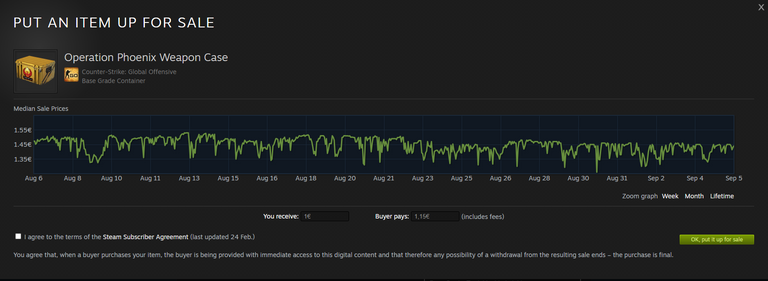
Image 1: Steam marketplace item listing user interface
Majority of P2E business models rely on paying their players less than what they earn (duh!). That is often achieved by running numerous ads or extractive freemium monetization. Some games subsidize rewards through their in-game currency inflation. Others simply move their freemium infrastructure on the blockchain and start branding themselves as a “metaverse company” to impress their investors. Very impressive. Such improvement. Wow.
Reality check
Talking about wild ideas and dreaming about castles in the clouds is easy. Building things, not so much. It’s much easier to pretend you’re doing something new, while you’re just repainting the same old thing with a new layer of paint. Just like with arcade, console, PC and mobile gaming, we are bound to see some more and some less successful attempts of incorporating blockchain into video games.
Let’s also not forget what most people hear about crypto and NFTs. Environmental concerns, money laundering, financial speculation and scams are among most covered topics by the media, while they usually forget to mention any of the benefits these technologies bring to their users. Additionally, the space is currently littered with grifters who deploy various techniques and attempt to steal crypto holdings of unsuspecting users. Unsurprisingly, new crypto users are often victims of these tricks, which results in them losing their (often very expensive) NFTs. I can’t imagine how many support tickets are filed with crypto wallet providers and NFT marketplaces by users who are trying to recover their stolen JPEGs.
I hope we can give NFTs more functionality than just a special border around their holder's social media profile picture. There will be few PFP projects who can sustain a thriving community through bear market(s). Those who haven't thrown in the towel yet, are now looking for new horizons to conquer. Some projects are promising to release video games that could rival products from currently established AAA gaming studios. At this point, we should return to first two sentences of this chapter. Creating a roadmap document doesn’t require much skill and doesn't prove that the founders are capable of executing the project's roadmap. Just like empty promises of the Initial Coin Offering whitepapers in 2017, there are many teams who don’t have enough game development experience to deliver a product they are promising to their patrons. If you don't believe me, just ask the most famous Pixelmon – Kevin.
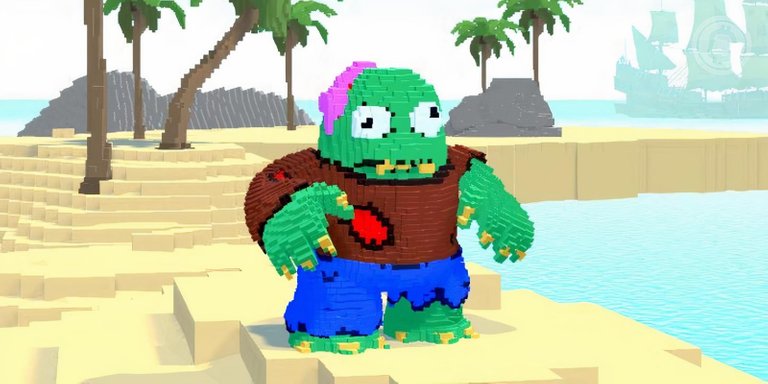
Image 2: Pixelmon Kevin
But instead of remaking what already exists, shouldn’t crypto games focus on the benefits that blockchain provides? How can this new generation of games differentiate itself from what's already out there? Games that brand themselves as “revolutionary” should have a better pitch than: “It’s like [insert a popular gaming franchise name] but with NFTs.” Betting on such copycat games might prove itself as a bad decision in the long term, because how can they compete when the products of Xbox Studios (current owners of Halo, Minecraft, Age of Empires, Fallout, Doom and many other franchises) when they start incorporating blockchain into their games?
Can NFTs improve video games?
Now, let’s try to figure out what the heck can these digital tokens (aka NFTs) offer gamers. One of the main properties of most crypto tokens is that they are solely controlled by the owner of the crypto wallet they reside in. More specifically, whoever knows the mnemonic phrase (usually 12 generated words that serve as a password to your crypto wallet) may transact with the tokens in that wallet. Moreover, blockchain data is publicly available and may be read by anyone running appropriate software. Therefore, it doesn’t matter who's developing the game. Anyone can always verify if your wallet contains any tokens recognized by the game. Because most tokens can be freely traded just like any other cryptocurrency, that opens a possibility of “cashing out” without 3rd party intermediaries. This means that the player may sell their gaming assets to somebody else after deciding they no longer want to play the game. This has some possible benefits for the players of that game, but it also creates possibly perverse incentives, where some players might just farm and immediately dump their newly acquired gear for other fungible cryptocurrencies (like BTC, ETH, stable coins, etc.). In-game economy design is especially important because wrong rewards may incentivize unwanted gamer behavior and hinder the project's long term success.
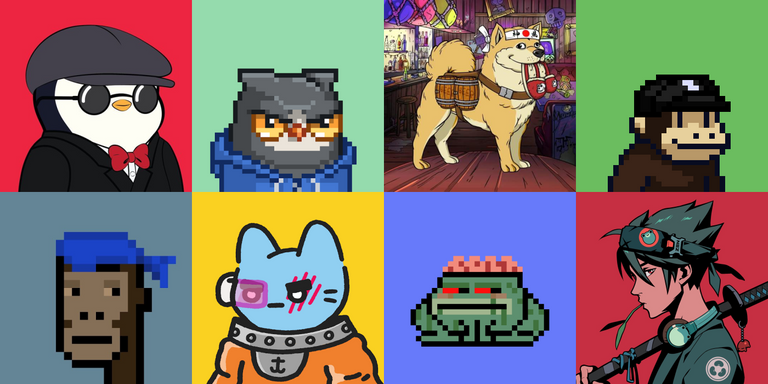
Image 3: Collage of some PFP collections
Because crypto tokens follow certain standards, they can work with any game that supports those standards. Video games could verify that the player owns a certain type of token, representing some asset compatible with that video game, and show it in-game as an item in the player’s inventory, some sort of a consumable or in-game currency. NFTs can easily work as profile pictures because we already have standardized data formats (.png, .jpeg, etc.) that are used to store digital images. Even if the platform isn’t blockchain compatible yet, the owner can still right-click save the image that's linked to their NFT, and then upload it to the Web2 platform (oh, the irony).
Now, as you might imagine, video game assets require additional data such as: stats, animations, dialogue, etc. What makes it even more complicated is that different games use different art styles, rendering engines, gameplay mechanics and so on. There are already some projects who are tackling this issue from different angles (listing all of them would make this article waaaaay too long, so here's just a few of them):
Loot: Words describing adventurer gear (Divine Hood, Linen Robe, etc.) are stored on blockchain in form of NFTs. As per description on their website: “Stats, images and other functionality and intentionality omitted for others to interpret. Feel free to use Loot in any way you want”.
The project started with 8000 Loot bags (now called OG Loot bags). Due to large public demand, other types of loot were eventually introduced. Different game developers may choose to build their own representation of “Divine Hood” that suits their game art style with balanced stats. That equipment piece could be used in game by every holder of the “Divine Hood” NFT.
Rarity: Dungeons & Dragons and Loot inspired project where your NFT represents a summoner of a certain class and level. Summoners can be sent on adventures where they gain XP to level up. The gameplay became more complex with addition of crafting mechanics. With that, the players may craft (mint) new NFTs representing different gear that the summoners may equip.
At its core, summoner and equipment NFTs are just composable building blocks that were designed to fit together like Lego bricks. That allows for community content creation, where basically anyone can create an equipment NFT for Rarity characters, if they follow standards set by Rarity developers.
Ready Player Me: Ready Player Me focuses on providing a single identity across different games. They offer avatar creation from a photo or a template. The website currently advertises that their avatars are compatible with 1750+ apps and games. Their platform allows users to create their own 3D metaverse representation of themselves while giving developers tools to integrate those types of avatars into their games.
The Sandbox: The Sandbox is a community-driven platform where creators can monetize voxel assets and gaming experiences on blockchain. Sandbox advertises itself as a platform for creating video game assets that can be used in multiple different experiences on its platform. The Sandbox uses more hands-on approach compared to Rarity, because they are still developing the platform. Whitepaper mentions plans to eventually transition project governance to a DAO governed by the $SAND token.
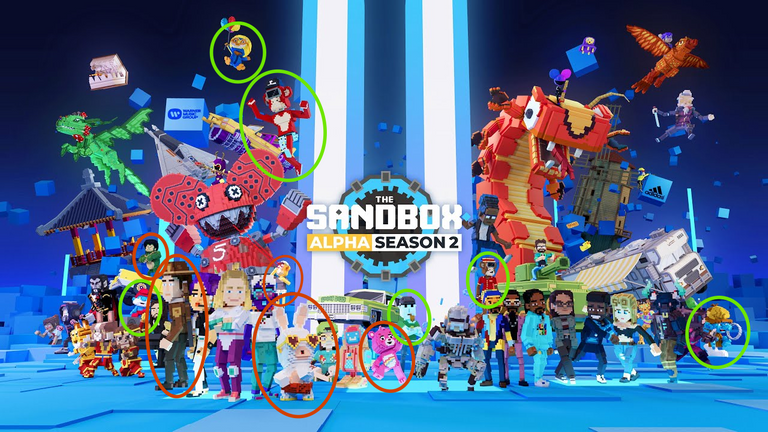
Image 4: Sandbox alpha season 2 loading screen
Crypto Raiders: Crypto Raiders is an NFT-based dungeon crawler, where player owned characters battle different dungeon enemies. The raiders also have equipment slots for gear that increases their stats. As outlined in a 2021 blog post, the game may include Loot NFTs as a part of its gear system, where different Loot is bound to different character equipment slots (eg. Wand – Main Weapon, Holy Chestplate – Torso, etc.).
Otherside: Otherside is a world-building platform that provides an exciting environment to play, create, compete, connect, and explore together. One of their goals is bringing NFT interoperability to the next level, allowing the users to bring their own collections into their platform. It appears to be one of the few blockchain world building platforms that openly acknowledges the importance of the bottom-up approach to NFT interoperability, which will be covered more in-depth in the next part of this article.
As evident from these examples, if we want interoperability between video games and NFT assets to exist, one side must adapt to the other. Ideally, game developers and NFT artists will find a common ground somewhere in the middle, where they may exist happily forever after.
NFT–video game integration
Both crypto gaming and the metaverse are still in their early days, so it’s likely that some or even many crypto games and metaverses existing today, won’t make it in the long run. In this chapter, I will try to outline two possible approaches to achieve multi-experience interoperability. It is difficult to comment which of them is better, as both have their inherent strengths and weaknesses. In the end, I doubt there will exist just a single implementation. There will probably be better and worse attempts at both sides of the spectrum, but in the end, I believe the communities with better execution will prevail regardless of the path they choose.
Top-down approach
Summary: The simplest example of this is a single game development studio developing a token for their own Web3 game. Game studios could also cooperate with each other and form “platforms” that operate on a shared token standard. Platform members would ensure that their games are compatible with the token standard, so their assets can work seamlessly across different games.
In the future, game development studios could create a platform and set up internal token standards which would ensure that their NFTs are compatible with the other games on the platform. Different studios (and other entities) could collaboratively decide on a shared standard that would be incorporated into their games. This approach would make sense, if there are multiple video games that share a common theme, art style, gameplay mechanics, etc. Because it can be difficult to include all parameters required for every video game genre into a single token (RPGs might require different stats for equipment gear than a racing game for its cars), this is the most common approach we see today, when every Web3 game has its own native token(s) that (usually) aren't recognized in other games.
It is much simpler for developers, if they design the rules themselves and don’t have to coordinate with others whether some parameter change makes sense or not. Most crypto game developers build their assets based on ERC-721 or ERC-1155 standard. These standards allow for creation of crypto tokens that can hold metadata required for a specific game. That makes it somewhat difficult for others to implement these NFTs into their own games, as they would have to adapt their game to each of these foreign tokens (if we assume that the game would be supporting multiple different collections of NFTs) and their specific parameters. It may turn out that it is simpler, if a group of games figures out some parameters that are acceptable by all developers, instead of each trying to figure out a path that suits them in the short-term, while making their tokens practically unusable outside of the main game.
It probably wouldn’t make much sense to have a gun from Call of Duty in a racing game. But having a car from Need for Speed (racing game) in Forza (another racing game), might. But would such assets fit into a Mario Kart (yet another racing game)? Likely not. Multiple development studios/publishers could set their own NFT specs and build their games in a way that will allow use of certain NFTs in multiple games. Those NFTs would likely be sold on a marketplace, specifically curated towards the games that support them. The NFTs would likely have to follow some technical and artistic guidelines set by the platform to ensure their compatibility with the games they're building.

Image 5: Racing game art style comparison
From a Web2 point of view, composability also poses a risk to the game’s business model. What if Studio A makes a cool equipment NFT, but the players only use it in games developed by other studios? This topic is mostly outside of the scope of this article, but I would imagine there could be some sort of an ecosystem funding pool that would be used to support those, who aren't fairly compensated for their contributions to the ecosystem as a whole.
-Of course, in Web3 we are already used to composability and sometimes expect it in places that currently don’t support it yet. Composable NFTs also improve creator economy, as they provide a wider use case to their owners.
Bottom-up approach
Summary: Tokens represent just an “idea” of an asset, and it is up to every game developer to materialize it in their own game. As these “ideas” might be as simple as a string value of an asset’s name, it is up to every game developer to create a "bridge" that will allow supported collections to materialize in their game. Due to Ethereum chain data being publicly available, anybody can create an app that utilizes tokens minted by other parties.
Bottom-up implementation approach allows developers to decide which already existing NFT collections they want to support in their game(s). Because foreign NFTs rarely hold all required data for the game to function, game developers need to create a bridge that will connect the player's on-chain ownership of a certain token with that token's representation in their game. This kind of partnership could be initiated either by the NFT creators/community to give the holders more functionality in the metaverse, or by game developers who are trying to attract a new NFT community to their game. Some PFP collections are already working on extending the functionality of their tokens by allowing them to materialize in other games. For example, you’d look quite odd if you jumped around The Sandbox as a flat square jpeg. But what if you could transform into a 3D voxelized representation of your Crypto Punk or your Bored Ape? Now, that would be cool! They teased this functionality on their Alpha Season 2 loading screen (shown earlier in the article). With the Alpha Season 3 launch, The Sandbox started allowing owners of some select PFP collections, to claim a voxelized avatar of their PFP that's compatible with The Sandbox's metaverse.
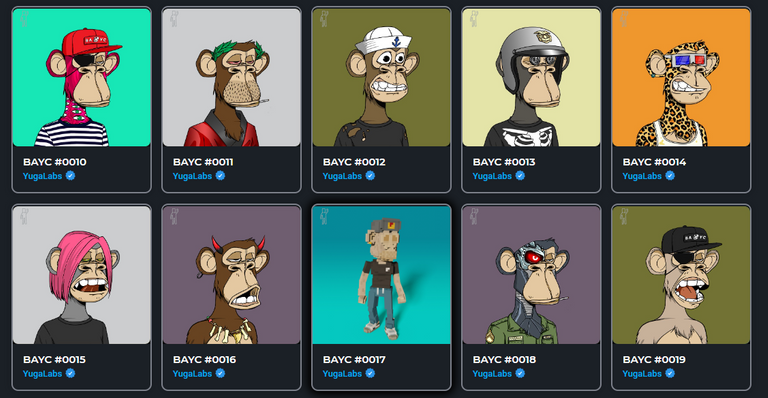
Image 6: User interface for claiming BAYC avatar in the Sandbox
Building these bridges, that materialize player’s PFP NFT into a fully-fledged avatar, may take some time, but I believe they will play an important role in the project's success over time. Because user’s tokens are visible on the chain, multiple games could integrate the same asset collection in their games. These integrations will create stronger symbiosis between NFT communities and video game experiences. Gaming studios are always looking for more people to play their game, so they might think of bridge building costs as marketing expenses to attract a new community to their game. They could do this through airdrops where holders of the original NFT would receive another token that's representing the character they already own in a specific game/ecosystem. Games could verify that the player’s wallet holds an NFT that their game recognizes as a custom avatar. If the player verifies ownership of some custom avatar, they could appear in the game as that custom character.
Possible malicious abuse of this approach would be vampire attacking some NFT collection(s) and siphon their users to a game with more ponzified incentives. Let’s say somebody makes a game called Malicious Mice (made-up game), where you can send your Cool Cat (real NFT collection) to catch the mice for some token rewards. Of course, somebody else might have a similar idea and create Rampant Rats (another made-up game). Its gameplay would be very similar to Malicious Mice, but it has its own theme based on rats instead of mice. Because Malicious Mice built a large community around their game which is attracting many Cool Cat holders, Rampant Rats’ developers decide to give some incentives for Cool Cats to move from their competitor to their own game. This could be somewhat similar to what Sushiswap tried to accomplish with the launch of their vampire attack on Uniswap at the end of August 2020. In the end, the users will have to decide whether they prefer to move to another game to earn possibly higher rewards or not. Of course, Malicious Mice might respond by increasing their rewards as well, resulting in a short-term net positive for the player, even if they don’t switch the game they’re playing.
Closing remarks
In the end, I believe that games are supposed to be fun, and paying the players highly inflationary token rewards can hardly be seen as a substitute for that. Many so branded "P2E" games should actually be labeled as gamified decentralized finance, and it's nothing wrong with that, as long as they're transparent about it - it shouldn't serve as the game's main selling point. I believe that over a longer time horizon, quality projects will float to the top, while exploitative non-inventive attempts slowly wither with time. Anyway, given that the blockchain is usually an open source technology, anyone can build on top of it and I am excited to see what innovation that might spark in the video gaming sector once proper adoption kicks in.
'Till next time.
Disclaimer: Author of this article is a member of The Sandbox creator fund at the time of writing this article.
Congratulations @nexonik! You received a personal badge!
You can view your badges on your board and compare yourself to others in the Ranking
Support the HiveBuzz project. Vote for our proposal!
Congratulations @nexonik! You received a personal badge!
You can view your badges on your board and compare yourself to others in the Ranking
Support the HiveBuzz project. Vote for our proposal!